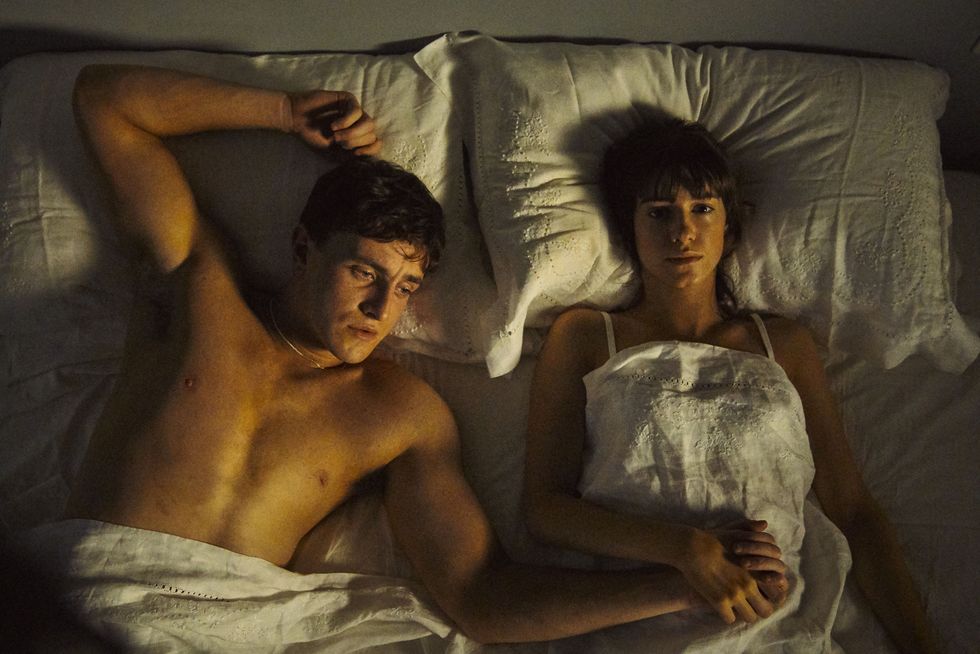
Source: BBC
A month or so into lockdown, I was talking with a friend about ‘Normal People’. I had staved off as many passionate recommendations as I could, which, in retrospect, was probably because on some level I knew how much it would mess me up, and I am nothing if not a touch cowardly.
But watch it, I did. Cry hysterically, well, you bet I did that too. But I was ranting to my friend about an aspect of the show which had truly surprised me: I just couldn’t understand why the sex scenes had bothered me so much. Bothered me in a good way, that is. They had felt brutal in their clarity and honesty, and the intensity and precision of the performances made me squirm with recognition. They felt like dances. My friend let me know there was a very good reason for this. They were, in a sense, dances.
The show had enlisted the services of Ita O’Brien, a professional intimacy co-ordinator. O’Brien is an incredibly impressive person. As well as ‘Normal People’, she has worked on numerous other projects including ‘Sex Education’ and ‘I May Destroy You’. She has also published a set of official guidelines on what constitutes good practice on sets. All of this, coming to prominence in the wake of the Weinstein revelations, has attracted massive attention.
To give some sense of the role, an intimacy co-ordinator will generally map out a series of precise movements to build up a scene, based on the comfort and consent of the actors involved. They will take steps to ensure the dignity and professionalism of the process-for example, O’Brien has been known to consult with performers regarding their menstrual cycles, to avoid filming intimate content at uncomfortable times for them.
O’Brien’s work, and the work of other people in the field, is obviously vitally important. There is a slew of horror stories to be found about the way film sets have been run, dating back as far as anyone cares to look. The degradation, humiliation, and outright violence experienced by individuals is well-documented. But there are subtler transgressions which we must face up to as well.
For example, in 2015, Argentinian film director Gaspar Noé gave an account to the Irish Examiner of why he felt non-simulated sex in mainstream films was so intriguing for an audience. He suggested:
“In most societies whether they’re western or not, people want to control the sexual behaviour or to organise it in a precise context. Sex is like a danger zone. Sometimes class barriers fall down and it scares a lot of people. It’s about states controlling their systems, like religion.”
His opinion should make us uneasy for a variety of reasons. Anyone who cares to do a bit of research on the film he is discussing, ‘Love’, will know that, from casting to shooting, the whole thing was a textbook example of bad practice. His vague, clichéd allusions to the “systems” he is fighting are misguided at best. However, Noé’s real error is to mistake ill-defined boundaries and an ambivalence towards consent for a radical, subversive artistic statement.
The irony of all of this being, of course, that Noé’s fundamental premise is right: sex is linked to power, just not in the way he thinks. It isn’t rebellious to leave performers with no structure within which to work: it is lazy and unprofessional. It isn’t rebellious to instruct actors to have sexual intercourse on camera, or simulate it with little to no safeguarding, it is an abdication of responsibility. It is not rebellious for a middle-aged cis man with an established career to encourage artists in their twenties to touch each other intimately with no lines in the sand, it is coercion disguised as art.
It seems that when directors and creative teams leave intimate sequences relatively unplanned, they are doing so because they think spontaneity is equivalent to authenticity. The only real achievement of this approach is to strip the rehearsal room or set of its professionalism, and let the latent dynamics of misogyny and male dominance re-assert themselves. At best, this comes from a genuine desire to create a free, organic environment for art to happen in. At worse, it is nothing more than an excuse for the bullying and intimidation of people with less relative privilege. In turn, it leads to the primacy of consent being discarded in the supposed name of art.
Thinking about this piece made me ponder my own place in this. For full disclosure, I am white, male, cis, straight, able-bodied, and relatively skinny. I am also a performer. I like to think I am pretty anti-establishment; I have a tendency to be attracted to challenging and experimental art, in both process and product, and I have certainly been in rehearsal rooms where the mission statement has been to let go of inhibitions, to follow instincts, to say ‘yes’ to whatever comes up in the moment. But this can so easily go awry, whether intentionally or not, and when my privileged body floats into a space, it’s easy enough for me to ignore or side-line the complex web of politics woven into the room. People like me must think much more carefully about who we are, and what we do to others.
In reality, this conversation should never end. It should explode outwards, to interrogate the sovereignty of people’s bodies in a much wider context. It should involve neurodivergence, trans bodies, and people of all shapes and sizes. Ita O’Brien and her contemporaries have brought to the forefront a discourse long ignored. And for every violation of every person on every set or stage over the years, the new rules we formulate must be so rigorous as to make sure it never happens again.
Filed under: Film, TV & Tech
Tagged with: actor, coordinator, film, I May Destroy You, intimacy, Normal People, scenes, sex, Sex Education, TV



Comments